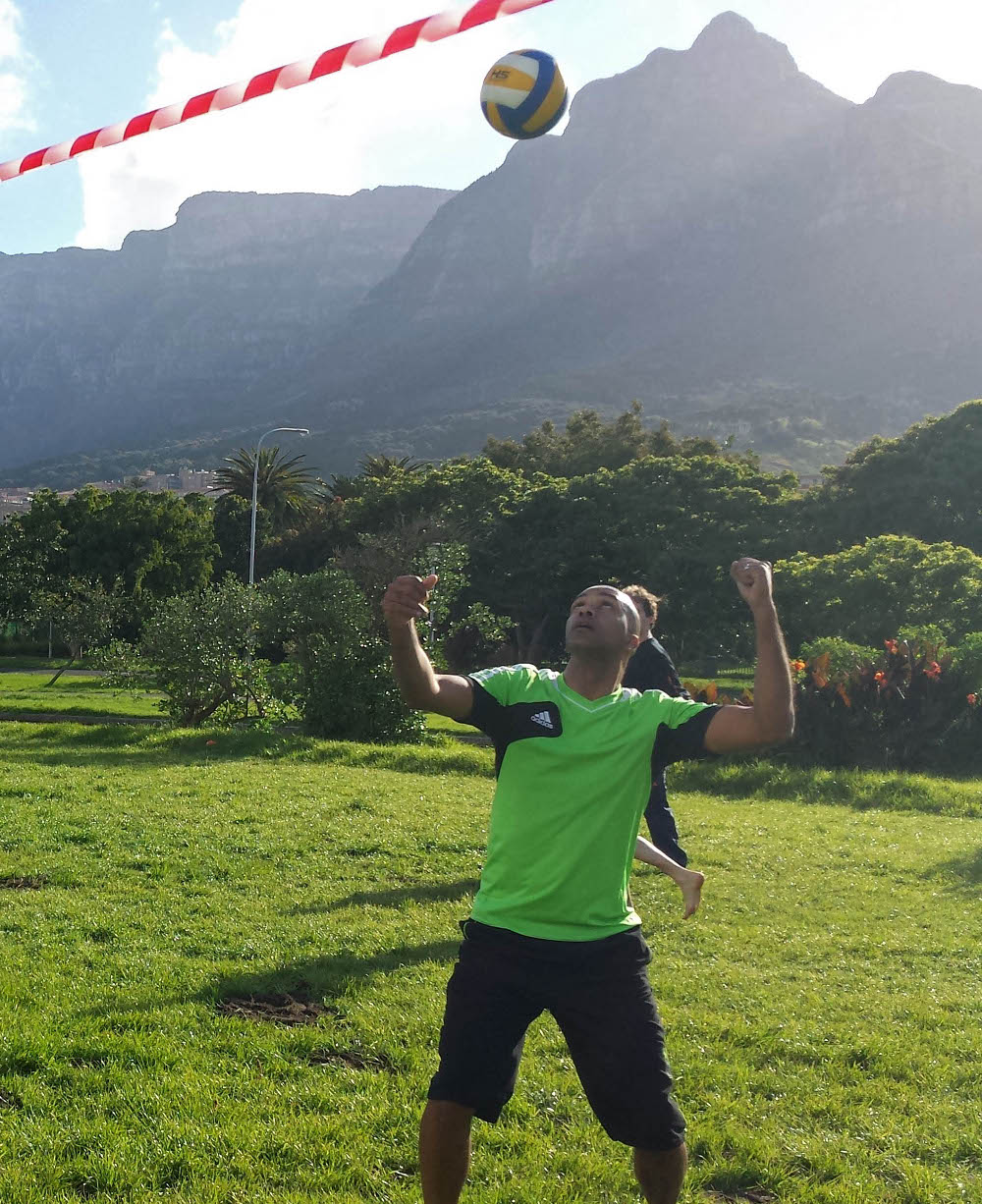SA's top teams competed at the Fistivus fistball festival at Wynberg Park in Cape Town.
The email landed in Leif Petersen’s inbox. “Holy shit,” he thought when he opened it. “Holy, holy shit.” The email addressed to “President Peterson” was from Winfried Kronsteiner – the Salzburg-based general secretary of the International Fistball Association (IFA).
Kronsteiner had informed Petersen that the IFA board had unanimously decided to accept South Africa’s application for membership. What this meant was that Petersen – a 40-year-old researcher of informal economies who had never won a single athletics award in his life – was going to lead a team of South Africa’s finest fistballers to the Fistball World Championship in Argentina in 2015.
He was now, in the eyes of the world fistball authority at any rate, a Springbok fistballer – a Fistbok. “There’s no turning back now,” thought Petersen. “Shit has just got real.”
Two years earlier, as Petersen was approaching a well-earned mid-life crisis, he realised he couldn’t afford a sports car, didn’t want a trophy wife and didn’t look good in Lycra (so becoming a mountain biker was not an option). “It’s always been every kid’s dream to play for their country and as I gradually came to the realisation that I would never get the nod for the Proteas, I had to find a smaller pond where I could be a bigger fish,” he said.
What Petersen actually meant was that he had to find an obscure sport that not too many people played. After subsequently stumbling across the Asian Fistball Cup in Pakistan and watching the Australians take a beating, he had a lightbulb moment. “That could be me,” he thought.
‘Volleyball on steroids’
Petersen punched “fistball” into Google’s search engine to learn more about this sport. He discovered that fistball is the world’s oldest team sport, first played in Rome around 240CE, and is wildly popular in Austria, Namibia and other far-flung localities.
The game is often described as “volleyball on steroids”. Basically, two teams of five square off against each other on a tennis court-sized pitch with a volleyball-height net – and take turns slamming a ball at each other, using their fists.
Petersen could find no South African fistball league, so he decided to start his own. One Friday afternoon at the beginning of 2014, he herded a ragtag bunch of friends to the local park in the Cape Town suburb of Wynberg and read out the rules. The people who were press-ganged into fistball action included a violinist, a herbalist, a baboon monitor, some refugees, a botanist, a green campaigner, an aspiring actuary, a photographer, a journalist (this one) and the journalist’s 10-year-old son.

Players in action at the Fistivus festival. (SA Galjoen)
After a net was built out of safety tape and awning poles from a friend’s camper van, the two teams played. “Chaos ensued,” said Petersen. Balls were punched, slapped and moered, knees were grazed and a joint was twisted, which had nothing to do with the herbalist.
The fistball bug bit (well, it bit everyone except the violinist, who never came back, claiming hand safety concerns – yeah, right). Weekly fistball sessions were organised, punching puns were circulated, a Facebook page was established and a nonprofit sporting entity – the South African Fistball Association – was registered.
World championships
Petersen heard about the men’s world championships in Argentina in 2015 and set this as a goal. He sent numerous emails to the South African sporting authorities, requesting official recognition of the association and its motley crew of fistball misfits as the game’s national body.
These emails went unanswered so Petersen turned to the IFA, which was delighted that South Africa was finally stepping up to the world fistball stage and asked Petersen to apply for membership.
“We were punching above our weight,” said Petersen, “but we had Argentina in our sights – as well as giving the Australians a thumping.”
The South African league started to take shape and a “Fistivus” – a fistball festival named in honour of the game’s Roman origins – was organised at the Wynberg park.
“Because the South African version of the game was born in Wynberg we had no choice but to approach Wynberg’s favourite son, Jacques Kallis, to be our patron,” said Petersen.
“Who knows – we might even get him to play a game and he could graduate from the Proteas to the mighty ranks of the Galjoens.”
The Galjoens
South African fistball’s national squad has been dubbed the Galjoens – the country’s national fish, which is known for its fighting qualities and diverse colouring, reflecting the nature of South Africans.
After much preparation, training and honing of skills, South Africa’s finest fistball teams punched off in the first Fistivus event in November. In the end, the North Beach Knuckle-dusters stormed home, beating the Kaapse Fisters in a tense final by 14 points to 12. Petersen’s team, Goldfister, romped home in third position.
Herbalist (and captain of the North Beach Knuckledusters) Andrew “Mr Fistievous” Reid was named the season’s best and fairest player for his performance and his winning team received the inaugural Meike Aschenbroich trophy.
On November 20, three weeks after the Fistivus tournament, Petersen opened the “holy shit” email from Kronsteiner, welcoming him to the international fistball community.
This year promises to be a big one for “President Petersen” and South African fistball. The association has three objectives, said Petersen: “To get formal recognition from the South African sporting authorities (or at least to get a response), to raise funds to get to Argentina and to hone our high-performance team members’ skills so that the Fistboks can outfox and fistbox those Aussie boxing kangaroos.”